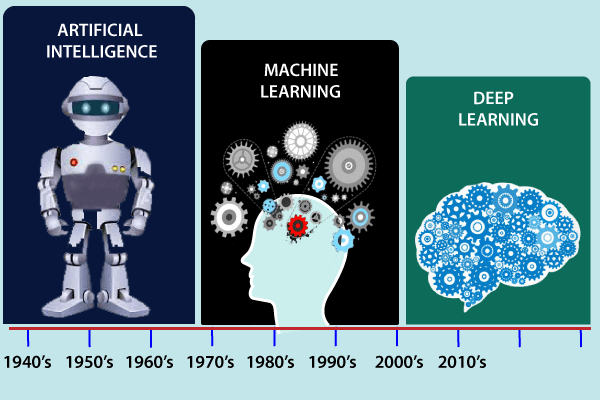History of Machine Learning
Before some years (about 40-50 years), machine learning was science fiction, but today it is the part of our daily life. Machine learning is making our day to day life easy from self-driving cars to Amazon virtual assistant "Alexa". However, the idea behind machine learning is so old and has a long history. Below some milestones are given which have occurred in the history of machine learning:

The early history of Machine Learning (Pre-1940):
- 1834: In 1834, Charles Babbage, the father of the computer, conceived a device that could be programmed with punch cards. However, the machine was never built, but all modern computers rely on its logical structure.
- 1936: In 1936, Alan Turing gave a theory that how a machine can determine and execute a set of instructions.
The era of stored program computers:
- 1940: In 1940, the first manually operated computer, "ENIAC" was invented, which was the first electronic general-purpose computer. After that stored program computer such as EDSAC in 1949 and EDVAC in 1951 were invented.
- 1943: In 1943, a human neural network was modeled with an electrical circuit. In 1950, the scientists started applying their idea to work and analyzed how human neurons might work.
Computer machinery and intelligence:
- 1950: In 1950, Alan Turing published a seminal paper, "Computer Machinery and Intelligence," on the topic of artificial intelligence. In his paper, he asked, "Can machines think?"
Machine intelligence in Games:
- 1952: Arthur Samuel, who was the pioneer of machine learning, created a program that helped an IBM computer to play a checkers game. It performed better more it played.
- 1959: In 1959, the term "Machine Learning" was first coined by Arthur Samuel.
The first "AI" winter:
- The duration of 1974 to 1980 was the tough time for AI and ML researchers, and this duration was called as AI winter.
- In this duration, failure of machine translation occurred, and people had reduced their interest from AI, which led to reduced funding by the government to the researches.
Machine Learning from theory to reality
- 1959: In 1959, the first neural network was applied to a real-world problem to remove echoes over phone lines using an adaptive filter.
- 1985: In 1985, Terry Sejnowski and Charles Rosenberg invented a neural network NETtalk, which was able to teach itself how to correctly pronounce 20,000 words in one week.
- 1997: The IBM's Deep blue intelligent computer won the chess game against the chess expert Garry Kasparov, and it became the first computer which had beaten a human chess expert.
Machine Learning at 21st century
- 2006: In the year 2006, computer scientist Geoffrey Hinton has given a new name to neural net research as "deep learning," and nowadays, it has become one of the most trending technologies.
- 2012: In 2012, Google created a deep neural network which learned to recognize the image of humans and cats in YouTube videos.
- 2014: In 2014, the Chabot "Eugen Goostman" cleared the Turing Test. It was the first Chabot who convinced the 33% of human judges that it was not a machine.
- 2014: DeepFace was a deep neural network created by Facebook, and they claimed that it could recognize a person with the same precision as a human can do.
- 2016: AlphaGo beat the world's number second player Lee sedol at Go game. In 2017 it beat the number one player of this game Ke Jie.
- 2017: In 2017, the Alphabet's Jigsaw team built an intelligent system that was able to learn the online trolling. It used to read millions of comments of different websites to learn to stop online trolling.
Machine Learning at present:
Now machine learning has got a great advancement in its research, and it is present everywhere around us, such as self-driving cars, Amazon Alexa, Catboats, recommender system, and many more. It includes Supervised, unsupervised, and reinforcement learning with clustering, classification, decision tree, SVM algorithms, etc.
Modern machine learning models can be used for making various predictions, including weather prediction, disease prediction, stock market analysis, etc.






No comments:
Post a Comment